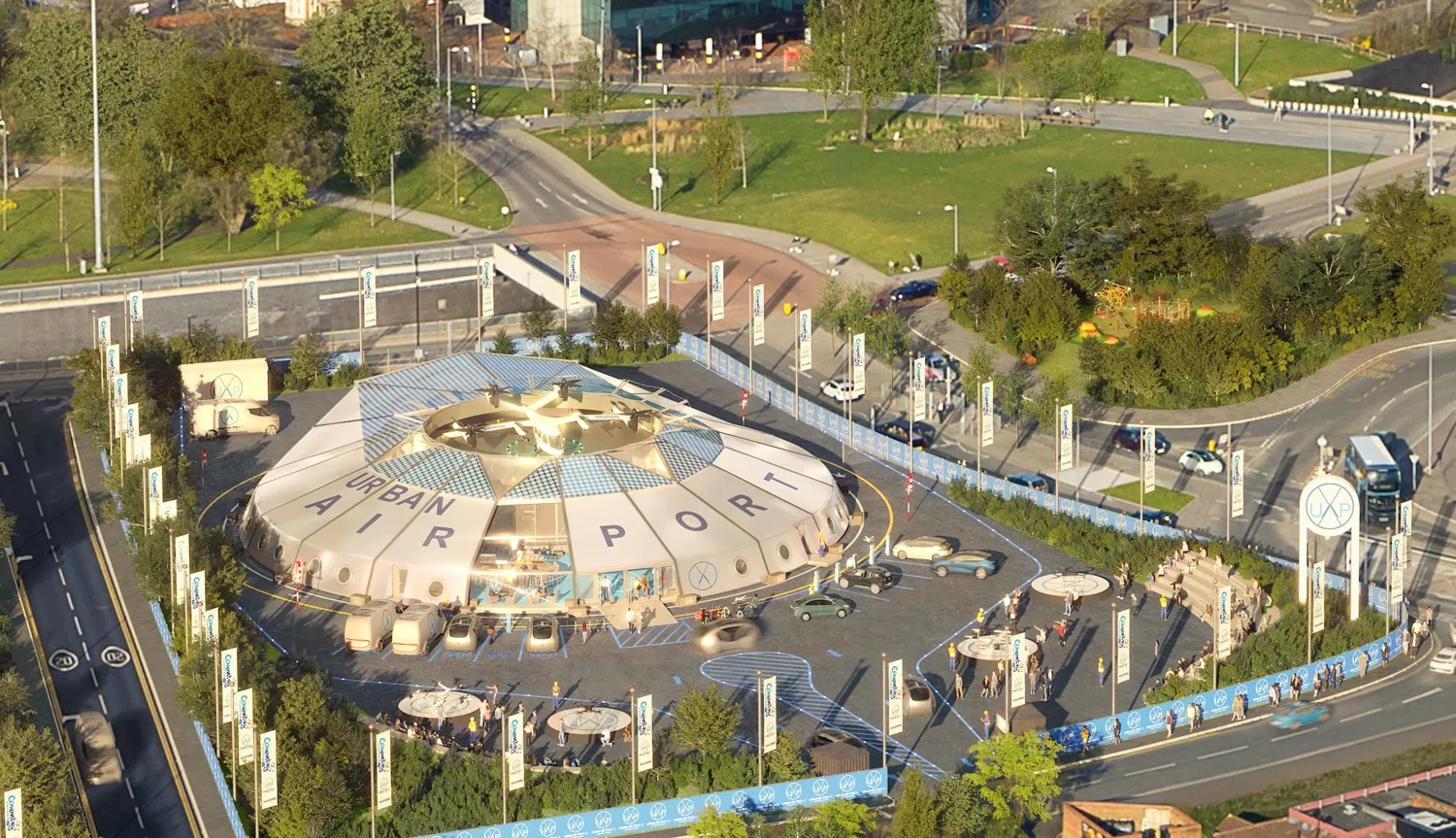
A fully-operational hub for electric vertical take-off and landing (eVTOL) vehicles such as air taxis and cargo drones opens today in England.
Air-One has been developed by Urban-Air Port, which is backed by the UK government and supported by Supernal, and says this is the first project of its kind in the world.
The hub, based in Coventry, will run "for at least one month" to highlight the ground infrastructure required to make the advanced air mobility (AAM) market - forecast to grow by 9% per year to reach $1 trillion - a success.
Urban-Air Port says it will 'redeploy' Air-One to other locations after the Coventry demo is finished.
Ricky Sandhu, founder and executive chairman of Urban-Air Port, called it the opening a "starting gun for a new age of transport, an age of zero-emission, congestion-free travel between and within cities that will make people healthier, happier and more connected than ever before".
He says the firm's order book "is not only open but already growing".
Urban-Air Port has plans to develop 200 vertiports worldwide, with locations in London, Los Angeles, Australia, South Korea, France, Germany, Scandinavia and South-east Asia.
“Air-One serves as a valuable, tangible asset to helping build stakeholder confidence and trust in emerging mobility technology and supporting systems," says Mike Whitaker, chief commercial officer of Supernal.
"The Coventry demonstration is an important first step forward to reimagining how people across the world will move, connect and live. Developing a scalable system to support advanced air mobility operations requires collaboration from all industries and corners of the world."
West Midlands Police and Skyfarer will be among the first to operate flights from the site, with UK-based drone developer Malloy Aeronautics flying large cargo drones.
Air-One will also host charging infrastructure for other modes of electric transport, including electric vehicles.
Coventry University’s National Transport Design Centre, part of the research Centre for Future Transport and Cities, has been involved in the hub's design, and Urban-Air Port is also collaborating with the international business division of Munich Airport on the launch.









